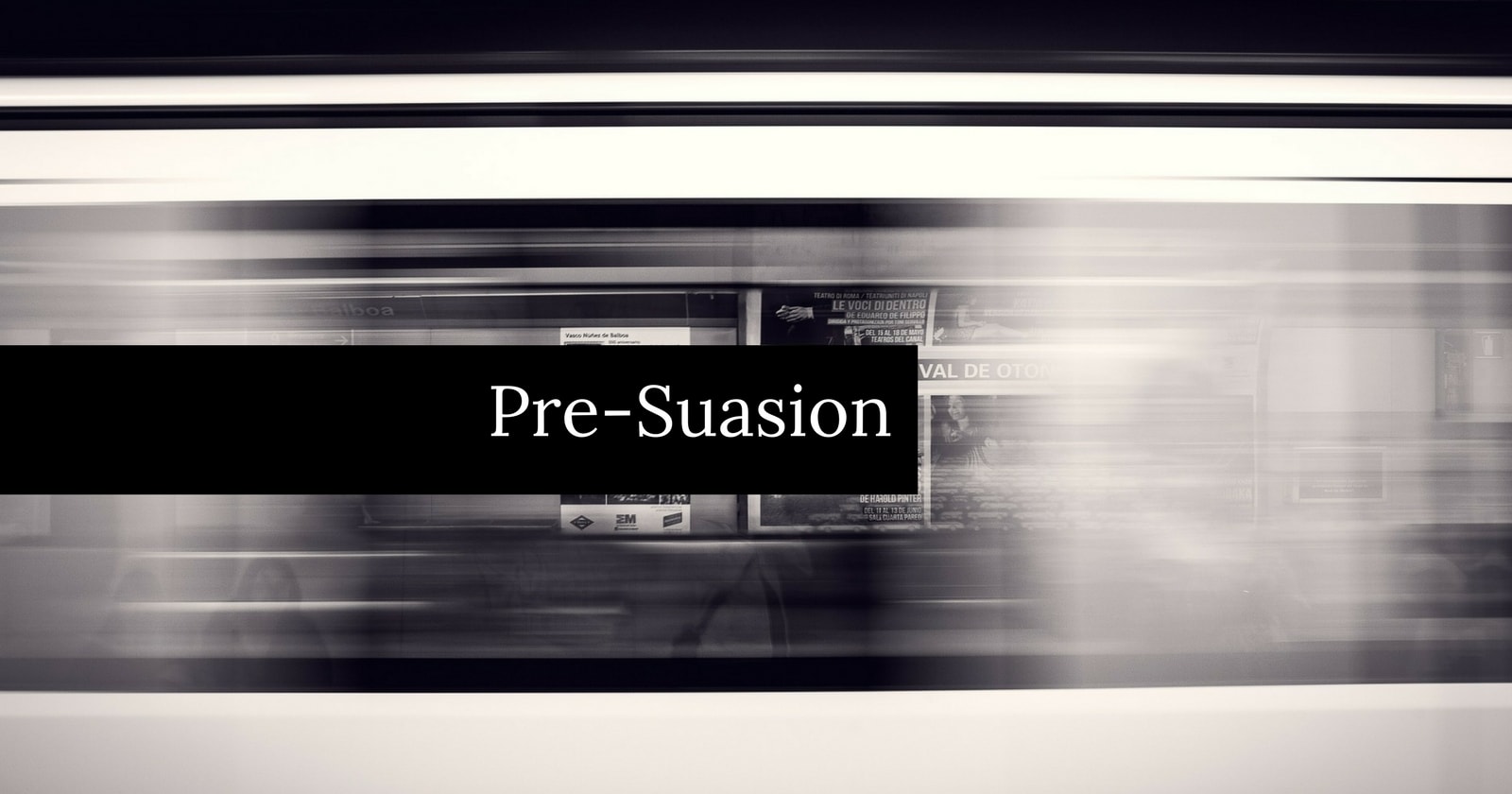“The basic idea of pre-suasion is that by guiding preliminary attention strategically, it’s possible for a communicator to move recipients into an agreement with a message before they experience it.” – Robert Cialdini, PhD, Pre-Suasion: A Revolutionary Way to Influence and Persuade
It was another 110-degree day in Phoenix — literally hot enough to fry an egg on the sidewalk — but I didn’t mind. I was enjoying a cup of coffee with the renowned social psychologist Robert Cialdini, PhD. He graciously agreed to meet with me to discuss an academic topic, but I walked away from our meeting with a lot more than I had anticipated.
In addition to Cialdini’s bestselling book, “Influence: The Psychology of Persuasion”, and countless published research articles, he recently wrote a book that explains the power of “pre-suasion.”
Cialdini is a wealth of knowledge when it comes to persuasion and influence. The following is my takeaway not only from my conversation with Cialdini, but also from reading his most recent book and contemplating marketing messages.
A word of caution and/or advice: pre-suasion is powerful and should be used only in an ethical manner. It’s about getting attention and causing action, not about manipulation.
1. Make It Personal
After more than a decade in search marketing, I have encountered clients with various preferences regarding content. Some want a formal tone with substantiated facts. Others want content that conveys empathy and appeals to the emotions.
Through the supervision of thousands of content pieces over the years — from blog posts to informative guides to landing pages — there is one common factor that results in a high rate of conversion.
What is that one element that will lead to success?
In “Pre-Suasion”, Cialdini identified a powerful magnet of attention: the self.
Cialdini provided an example of this concept that involved the topic of personal health. He explained how messages that are self-relevant and tailored to the audience, such as referring to their age or health history, are more likely to attract attention and be memorable. Furthermore, these messages have a higher probability of being taken seriously and saved for future reference.
For insight into how to better understand your audience, which will help you create self-relevant messages, read How to Know Your Audience to Master Your Marketing Campaigns in the SEJ SEO Guide.
Cialdini cited research by Ohio State University that found changing the wording to include “you” and “your” leads to a more positive attitude about a product.
Now, that isn’t the only factor that will influence the audience. Using “you” simply catches the attention. You still must have a strong case or evidence in your content to cause conversion. I wrote on the “you” concept a few years ago: Writing Panda-Pleasing Content Your Audience Will Actually Care About.
So, what is that one element that will lead to success? It is including self-relevance cues in your content.
2. Create a Mystery
In the world of search marketing, we live and breathe metrics: Traffic, rankings, conversion rates, click-through rates, time on page, etc.
There are also many statistics reported on the percentage of content website visitors will read, on average. While that percentage varies based on the source, the number tends to be high and can be discouraging for any content marketer.
What if there was a way to keep the reader’s attention from the introduction all the way to the last paragraph? It would no doubt be a content marketer’s dream come true.

Mona Lisa is one of the most famous paintings that attracts crowds of people who want to absorb the mastery of the painting. It has also been at the center of attention and speculation regarding the subject, from her smile (or lack of) to her expression.
These debates are centered on one thing: the mysterious.
Albert Einstein referred to “the mysterious” as “the most beautiful thing we can experience” and “the source of all true science and art.” Albert Einstein’s quote and the Mona Lisa painting were both examples provided by Cialdini to illustrate the power of mystery.
Through Cialdini’s research for one of his books, he discovered that mystery stories were used in successful content. The reason being is our human desire to have closure. We want to know the ending of a story and will give our attention to the mystery until we know how it is resolved.
When a mysterious scenario is presented, we are drawn into the content and compelled to engage. Cialdini explained that mysteries are effective communication methods for holding an audience’s attention and also provide a powerful way to educate.
Tuft & Needle learned the art of mystery in their marketing approach, which incorporated their online content.
A couple of years ago, billboards began to pop up around the Phoenix area with a simple statement: “Mattress stores are greedy. Learn the truth.”
It caught my attention, because I wanted to know why they were greedy and I wanted to learn the truth. I wasn’t the only one.
People started to talk about the message, because it created mystery.

Apply this concept by weaving a mystery throughout your content. First present the mystery, then deepen it before you provide alternative explanations and the eventual resolution. Case studies and customer stories would be prime material that could be molded into a mystery.
3. Provide a Linked Association
Every idea or notion is linked within a set of associations. Effective communicators know how to use language to manage the audience’s mental associations to the message.
Cialdini referenced recent psycholinguistic analysis that suggested that language directs the audience to areas of reality that are linked to mental associations that are in favor of the communicator’s view. Metaphors are great devices for creating these associations.
Tropicana successfully implemented a metaphor into their marketing campaign: “Your Daily Ray of Sunshine.” The message was persuasive and linked the product to a positive association.

You can apply this pre-suasion strategy into your content marketing by finding metaphors or other language that associate your concept with something positive and relatable.
A word of caution:
Just as you want your content topic and message to link to a positive association, you need to avoid a negative association. The last thing you want is for your audience to associate your content with something unfavorable.
You might remember the infamous 2016 Miracle Mattress sale associated with 9/11. They did a play on words and visuals that related to the terrorist attack.
As you can imagine, the video promoting the sale received a lot of attention, but not positive. People went to social media to express their outrage about the campaign, which included such comments, as “you should be ashamed of yourselves.” “Inside Edition” aired a special about the backlash.
There’s More
I only scratched the surface of the information presented in “Pre-Suasion”. The book is filled with strategies that are backed by research, including the if/when-then plans and a seventh principle of influence (Cialdini’s other book, “Influence”, presents six principles). It is a book that is a must-read for any content marketer.
Next time you’re working on a content marketing campaign, why not infuse elements of pre-suasion?
Image Credits
Featured Image: Pixabay
Screenshots taken by Mindy Weinstein, July 2017.





